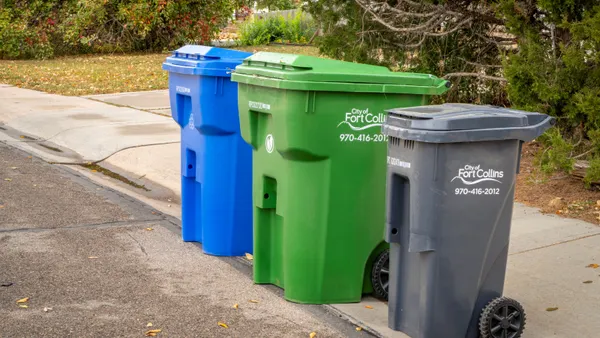Dive Brief:
- Five materials recovery facilities (MRF) of various sizes and streams were evaluated as part of a study commissioned to better understand the recycling of postconsumer packaging. The goal of the study — dubbed the "MRF Material Flow Study" — was to improve sorting inefficiencies and other factors that can lower recycling volumes and create missed opportunities for revenue.
- The National Association for PET Container Resources, The Foodservice Packaging Institute, The Carton Council of North America, The American Chemistry Council, and The Association of Postconsumer Plastics Recyclers all commissioned the study.
- The study found that an average of 3% to 12% of plastics, including bottles and containers, are lost to the paper stream in an MRF. Additionally, it found that three-dimensional objects, such as packages in their original form, have a higher likelihood of making it through the MRF into the appropriate containers as opposed to flattened or crushed objects.
Dive Insight:
It is estimated that $11.4 billion of postconsumer packaging is "wasted" each year, meaning that it does not get recycled properly — regardless of if it's sent to an MRF. By conducting this study, researchers have developed ways that recycling can be improved both by consumers and by industry employees within recycling facilities.
"The study reinforced that everyone plays a role in ensuring recycling is effective and efficient, and that there are actions that can be taken at all steps in the process to help ensure items get their maximum value when they are recycled,” said Resource Recycling Systems CEO Jim Frey, one of the architects of the study. “One such action is asking residents, and other recycling customers, not to flatten items before placing them in recycling containers."








